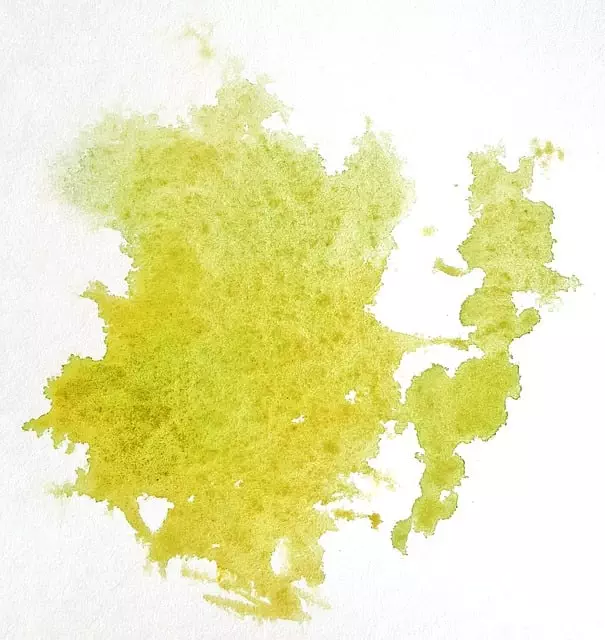This text provides a comprehensive guide to removing grout stains. It explains that understanding stain causes—like water damage, mold, or dirt—is crucial for effective removal. The process involves gathering suitable cleaning materials (grout cleaner, baking soda, vinegar) and wearing protective gear. Initial cleaning uses a mild soap and warm water solution; for tougher stains, a vinegar-water mix soaks the grout. Regular maintenance, including daily sweeping and using a microfiber mop, prevents future staining. Sealing grout with barrier products after deep cleaning repels liquids. Preventing leaks and promptly addressing moisture issues also guards against mold growth.
Grout stains can transform your once pristine bathroom or kitchen into a disorganized space. Understanding the causes and types of these stubborn marks is the first step in removing them effectively. This article equips you with comprehensive knowledge on how to deep clean grout stains, using simple yet powerful materials. From identifying stain sources to maintaining a stain-free appearance, we cover it all, ensuring your grout lines look as good as new. Learn the secrets to removing stains from grout lines and bid farewell to unsightly marks forever.
Understanding Grout Stains: Causes and Types

Grout stains can be a common and frustrating issue, especially in high-traffic areas like bathrooms and kitchens. Understanding the causes and types of grout stains is the first step in effectively removing them. These stains can result from various factors, including water damage, mold and mildew growth, dirt and grime buildup, and even improper sealing during installation.
There are several types of grout stains to consider: water stains, which appear as light-colored patches due to moisture intrusion; mold and mildew, often visible as discolored or fuzzy growth; dirt and grease, accumulating over time to create a yellowing or browning effect; and ink or oil-based stains from spills or markings. Identifying the specific type of stain is crucial in selecting the right cleaning method to remove stains from grout lines effectively.
Materials Needed for Deep Cleaning

To effectively remove stains from grout lines, you’ll need a few key materials. Start with a good quality grout cleaner—either a powdered formula or a ready-to-use liquid—that’s specifically designed to tackle tough stains and grime. Baking soda and vinegar are also powerful allies in your cleaning arsenal; these natural ingredients can cut through grease, mold, and mildew while being safe for most surfaces.
Don’t forget protective gear like rubber gloves to safeguard your hands from harsh chemicals, and a mask to prevent inhaling any unpleasant fumes. A soft-bristled brush or sponge will help you scrub away stubborn stains without damaging the grout. Lastly, have on hand a clean microfiber cloth for rinsing and drying, ensuring no residue is left behind.
Step-by-Step Guide to Removing Stains

Removing stains from grout lines involves a few simple steps that can restore the freshness of your tiles. Start by sweeping or vacuuming the floor to remove any loose debris. Next, mix a solution of warm water and mild dish soap in a bucket; the ratio should be about 4 cups of water to 1 tablespoon of soap. Dip a soft-bristled brush into the solution and gently scrub the stained grout lines. Be careful not to apply too much pressure, as this could damage the tile or grout.
Rinse the brush frequently in the soapy water to prevent spreading the stain. After scrubbing, use a clean cloth or sponge dampened with warm water to wipe away any remaining soap suds and check if the stain has lightened. If not, repeat the process with a stronger solution of one part white vinegar to three parts warm water. For particularly stubborn stains, you might need to let the vinegar solution sit for 15-20 minutes before scrubbing and rinsing again.
Tips for Preventing Future Staining

Regular cleaning and maintenance are key to preventing future grout staining. Start by sweeping or vacuuming your floors daily to remove loose dirt and debris that can settle into the grout lines. This simple step goes a long way in preventing stains from setting in. Additionally, using a microfiber mop with warm water and a mild detergent can help to effectively clean and rinse away any dust or grime before it has a chance to discolor the grout.
For extra protection, consider sealing your grout after deep cleaning. There are various grout sealers available that create a protective barrier over the grout lines, making it easier to remove surface stains with routine cleaning. Always follow the manufacturer’s instructions when applying a sealer and reapply as recommended to ensure ongoing protection against removing stains from grout lines.
Common Mistakes to Avoid During the Cleaning Process

When tackling deep cleaning for grout stains, it’s crucial to be aware of common mistakes that can hinder your efforts. One of the biggest blunders is using aggressive scrubbers or abrasive tools directly on the grout lines. These can damage the grout and surrounding tiles, leading to further issues and more work down the line. Instead, opt for a soft-bristled brush or a grout cleaning tool designed specifically for this task.
Another mistake to avoid is mixing too much cleaner in your solution. Overdoing it can result in a chemical reaction that causes damage to the grout and leaves behind residue. Always follow manufacturer instructions regarding cleaner dilution rates. Additionally, don’t rush the process. Taking your time ensures thorough cleaning without causing unnecessary wear and tear. Remember, patience pays off when it comes to removing stains from grout lines.
Maintaining a Stain-Free Grout Appearance

Maintaining a stain-free grout appearance is essential, especially in high-traffic areas like kitchens and bathrooms. Regular cleaning is key to preventing stains from setting in. Use a soft-bristled brush to gently scrub away any loose dirt or debris that may have accumulated along the grout lines. Baking soda and vinegar are natural cleaning agents that can effectively remove stains without harsh chemicals. Create a paste by mixing baking soda with a small amount of water, apply it to the stained area, let it sit for about 15 minutes, then scrub gently before rinsing thoroughly.
To prevent future grout stains, consider sealing the grout after deep cleaning. Sealants create a protective barrier that repels liquids and makes it easier to wipe away any dirt or spills. Regular vacuuming or sweeping can also help keep grout lines free from dust, hair, and other particles that could contribute to staining. Additionally, promptly addressing any water leaks near the grout area is crucial, as prolonged moisture can lead to mold growth and further damage.



